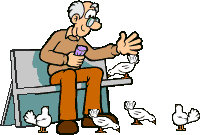Between 2006 and 2010, the demand for food from food banks grew by 23 percent in Massachusetts.
Federal aid that propped up food bank resources during the height of the recession has receded, but the demand has not, according to officials from the Greater Boston Food Bank, which feeds 545,000 people a year. Places like the Salvation Army, the Red Cross, Rosie’s Place, the Pine Street Inn, and local food pantries in dozens of communities rely on the Greater Boston Food Bank for a bulk of their supplies.
Money from the Massachusetts Emergency Food Assistance Program helps buy locally-grown produce - eggs, milk and other fresh staples. But with food prices on the rise – dairy is up 8 percent, and the average price of peanut butter has skyrocketed 30 percent, D’Amato said, “that $11.5 million doesn’t get you $11.5 million anymore.”
The Greater Boston Food Bank serves approximately 550 pantries, soup kitchens and shelters in eastern Massachusetts.
Friday, December 30, 2011
Wednesday, December 21, 2011
Pedestrian Safety
•
Although adults age 65 and older comprised less than 13 percent of the population in 2008, they were involved in 15 percent of vehicle fatalities and 19 percent of pedestrian fatalities. An older vehicle occupant is 18 percent more likely to die in a crash than someone under age 65. A more staggering statistic reveals that an older pedestrian is 61 percent more likely to die when hit by a motor vehicle than a younger one. The unique vulnerability of pedestrians and bicyclists on the road has inspired some state legislatures to pass laws designating pedestrians and bicyclists as “vulnerable users.” In the past five years, Connecticut, Delaware, Hawaii, Illinois, Iowa, Michigan, New York, Pennsylvania, Texas and Vermont have considered “vulnerable users” laws
Although adults age 65 and older comprised less than 13 percent of the population in 2008, they were involved in 15 percent of vehicle fatalities and 19 percent of pedestrian fatalities. An older vehicle occupant is 18 percent more likely to die in a crash than someone under age 65. A more staggering statistic reveals that an older pedestrian is 61 percent more likely to die when hit by a motor vehicle than a younger one. The unique vulnerability of pedestrians and bicyclists on the road has inspired some state legislatures to pass laws designating pedestrians and bicyclists as “vulnerable users.” In the past five years, Connecticut, Delaware, Hawaii, Illinois, Iowa, Michigan, New York, Pennsylvania, Texas and Vermont have considered “vulnerable users” laws
Labels:
.MALDENSENIORS.,
MALDEN CITY ISSUE,
MALDENSENIORS.
Wednesday, December 14, 2011
Access to health care “a basic human right
Signs everywhere that hospital systems, specialty medical societies, patient safety programs, health insurers, employers, labor unions and various states are already taking steps to improve the quality and lower the cost of health care. There is still plenty of room for savings in a complex system where 20 percent to 30 percent of all health spending — or more than $1 trillion a year — may be “waste” that does nothing to help patients.
Thursday, December 1, 2011
cola 2012
3.6% cola Effective 1 DEC, starts being paid on your next check due 1 Jan 2012, probably paid on 30Dec due to holidays
Take 3.6% times the check you just got 1 Dec..
That will be the amount your next check increases..
Example 100% VA comp is $2673 times 3.6% = $96 2673 + 96 = 2769
Or $2769 next check
$2769..This the amount you will receive monthly for 2012, until next COLA is announced
1 Dec 2012 for 2013. If no COLA will be the same as 2012
They always are a month behind..earn it this month, they pay you 1st of next month
This applies to Soc sec, Mil Retiree, and VA comp
Take 3.6% times the check you just got 1 Dec..
That will be the amount your next check increases..
Example 100% VA comp is $2673 times 3.6% = $96 2673 + 96 = 2769
Or $2769 next check
$2769..This the amount you will receive monthly for 2012, until next COLA is announced
1 Dec 2012 for 2013. If no COLA will be the same as 2012
They always are a month behind..earn it this month, they pay you 1st of next month
This applies to Soc sec, Mil Retiree, and VA comp
Subscribe to:
Posts (Atom)

